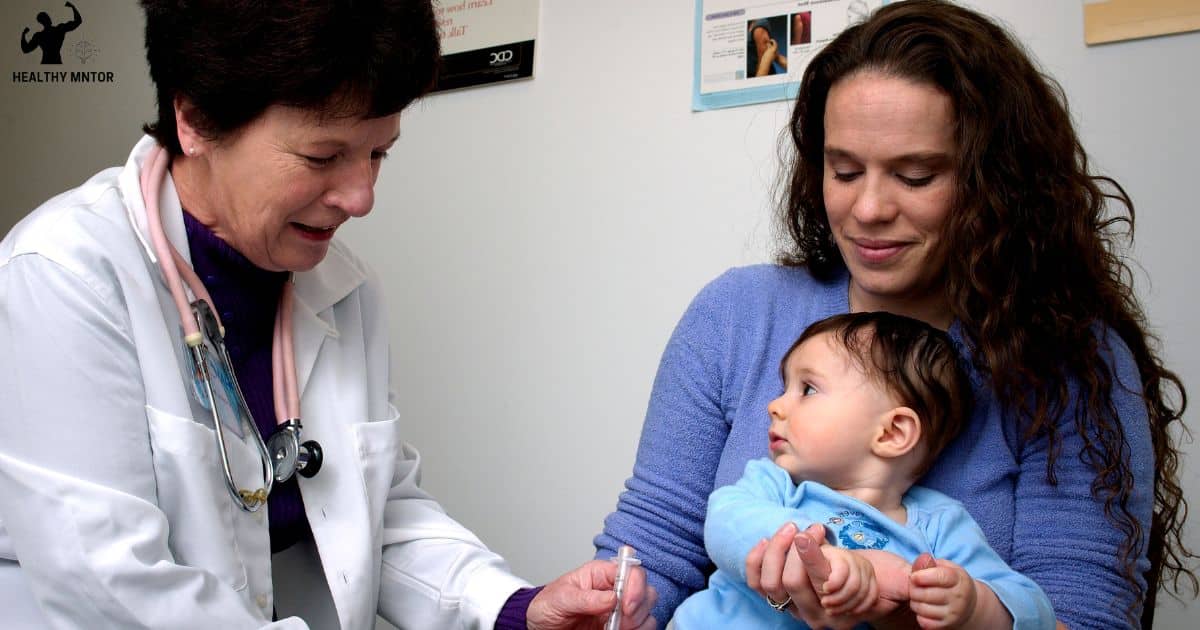In the complex landscape of government health care programs, various entities seek to provide comprehensive coverage and access to medical services. From the stalwart pillars of Medicare and Medicaid to the targeted support of programs like CHIP, VHA, IHS, and Tricare, the government endeavors to ensure the well-being of its citizens. This article delves into the realm of government health care programs, shedding light on their purpose, scope, and impact on the lives of millions, fostering a sense of belonging and understanding within our community.
Key Takeaways
- Medicare is a government health care program that provides medical coverage for individuals aged 65 and older, ensuring they have access to necessary medical care.
- Medicaid is designed to provide coverage to low-income individuals and families, ensuring access to necessary medical treatments and services for individuals with pre-existing conditions.
- The Children’s Health Insurance Program (CHIP) provides coverage to eligible children from low-income families, improving health outcomes and reducing financial barriers to necessary medical care for children.
- Tricare is a government health care program for military service members and their families, providing comprehensive medical, dental, and mental health services to meet their unique healthcare needs.
Medicare
Medicare is a government health care program that provides medical coverage for individuals aged 65 and older. It is a crucial component of the social safety net, offering access to affordable health care services for millions of Americans. Medicare coverage includes hospital stays, doctor visits, prescription drugs, and preventive services. To be eligible for Medicare, individuals must meet certain criteria, such as being a U.S. citizen or permanent resident, and having paid into the Medicare system through payroll taxes for a specified period.
Additionally, individuals with certain disabilities or end-stage renal disease may also qualify for Medicare coverage, regardless of age. Medicare plays a vital role in ensuring that older Americans have access to necessary medical care, promoting their health and well-being as they age.
Medicaid
Medicaid, a government health care program, is designed to provide coverage to low-income individuals and families who meet certain eligibility criteria. One key point to consider is the coverage and eligibility requirements, which vary from state to state.
Another important aspect is the funding and sustainability of the program, as Medicaid is jointly funded by the federal government and the states, and its long-term financial viability is a topic of ongoing policy discussion. Additionally, some health experts argue that certain health conditions are related to a lack of calcium, shedding light on the importance of nutritional aspects within healthcare.
Coverage and Eligibility
Government health care programs provide coverage and eligibility for individuals in need of medical assistance. When it comes to Medicaid, there are certain aspects of coverage and eligibility that are important to understand. Here are two key points to consider:
- Cost Sharing:
- Medicaid programs may require beneficiaries to pay certain out-of-pocket costs, such as copayments or premiums, based on their income level.
- However, these costs are generally low and affordable for individuals with limited financial resources.
- Pre-existing Conditions:
- Medicaid covers individuals with pre-existing conditions, ensuring that they have access to necessary medical treatments and services.
- This is particularly crucial for those who may have difficulty obtaining insurance coverage in the private market due to their pre-existing conditions.
Funding and Sustainability
Focusing on the financial aspect of providing healthcare support, one key consideration is the funding and sustainability of the government health care program. Medicaid, a government health care program in the United States, faces funding challenges that impact its ability to provide adequate healthcare coverage to eligible individuals. The program relies on a combination of federal and state funding, with the federal government matching a percentage of the state’s spending. However, rising healthcare costs and increasing demand for services have put a strain on Medicaid’s budget.
As a result, policymakers are exploring alternative models to address these funding challenges. These models include proposals to increase federal funding, implement cost-saving measures, or introduce new revenue streams. The goal is to ensure the long-term sustainability of Medicaid while maintaining access to quality healthcare for vulnerable populations.
Children’s Health Insurance Program (CHIP)
The Children’s Health Insurance Program (CHIP) provides coverage to millions of eligible children in the United States. It is a government health care program that aims to ensure that children from low-income families have access to affordable and comprehensive health insurance.
Here are some key points about CHIP:
- CHIP benefits:
- Comprehensive coverage for children, including doctor visits, immunizations, hospital care, prescriptions, and more.
- Preventive services to promote healthy development and early intervention.
- CHIP eligibility:
- Children from families with low to moderate incomes who do not qualify for Medicaid.
- Eligibility requirements vary by state, but generally include income limits and residency.
CHIP plays a crucial role in improving the health outcomes of children and promoting their overall well-being. By providing affordable health insurance, it helps reduce financial barriers to necessary medical care.
Transitioning into the subsequent section on the Veterans Health Administration (VHA), it is important to recognize the significance of government health care programs in addressing the diverse health needs of different populations.
Veterans Health Administration (VHA)
Continuing the discussion from the previous subtopic, the Veterans Health Administration (VHA) is a government health care program that provides medical services to eligible veterans in the United States. Veterans’ healthcare is a crucial aspect of the government’s commitment to those who have served in the military. T
he VHA is responsible for delivering a wide range of services, including primary care, specialized care, mental health services, and long-term care. Through a network of hospitals, clinics, and other medical facilities, the VHA ensures that veterans have access to quality healthcare that meets their unique needs. It also offers preventive care, rehabilitation services, and support for veterans with disabilities.
The VHA services are designed to address the specific health concerns and challenges faced by veterans, ensuring they receive the care they deserve. Transitioning into the subsequent section about the Indian Health Service (IHS), it is important to recognize that, like the VHA, the IHS is another government program that provides healthcare services, but specifically to Native Americans and Alaska Natives.
Indian Health Service (IHS)
The Indian Health Service (IHS) is a government health care program that provides coverage and benefits to eligible American Indians and Alaska Natives. It is funded primarily by the federal government through the Department of Health and Human Services. However, despite the efforts of the IHS, healthcare disparities continue to persist among American Indian and Alaska Native populations, highlighting the need for further policy interventions to address these inequities.
IHS Coverage and Benefits
IHS Coverage and Benefits offered by the Indian Health Service (IHS) provide comprehensive healthcare services to eligible American Indian and Alaska Native individuals. This government health care program focuses on ensuring access to quality healthcare for these specific populations. The IHS aims to address the unique healthcare needs of American Indians and Alaska Natives, who often face challenges in accessing healthcare due to geographical, cultural, and financial barriers.
The key benefits of IHS Coverage include:
- Healthcare Access: IHS provides a wide range of services, including preventive care, primary care, dental care, mental health services, and specialty care. This ensures that eligible individuals have access to the healthcare services they need.
- Healthcare Quality: IHS aims to deliver high-quality healthcare services by employing qualified healthcare professionals and implementing evidence-based practices. The program prioritizes culturally appropriate care that respects and honors the traditions and beliefs of American Indian and Alaska Native communities.
IHS Funding Sources
One of the funding sources for the Indian Health Service (IHS), a government health care program, is derived from federal appropriations. The IHS receives its funding primarily through the Department of Health and Human Services (HHS) annual budget. However, the IHS faces several funding challenges that impact its ability to provide comprehensive healthcare services to the American Indian and Alaska Native communities it serves. These challenges include inadequate funding levels, which result in limited access to care and lower quality services.
Additionally, the IHS relies on third-party billing and reimbursements from Medicaid, Medicare, and private insurance to supplement its funding. Despite these efforts, the IHS continues to face financial constraints that affect the delivery of healthcare services. Exploring alternative healthcare programs and innovative funding solutions may be necessary to address these challenges and ensure equitable access to healthcare for Native communities.
IHS Healthcare Disparities
Facing financial constraints that impact the delivery of healthcare services, the Indian Health Service (IHS) continues to grapple with healthcare disparities in providing comprehensive healthcare to American Indian and Alaska Native communities. These disparities in healthcare access and outcomes are rooted in a complex interplay of historical, socioeconomic, and cultural factors.
To fully understand the depth of the issue, it is important to consider the following:
- Limited funding: The IHS faces chronic underfunding, resulting in inadequate resources to meet the healthcare needs of the population it serves.
- Geographical challenges: Many American Indian and Alaska Native communities are located in remote, rural areas, making it difficult to access healthcare facilities and services.
- Cultural barriers: Language barriers, cultural differences, and lack of culturally competent care contribute to disparities in healthcare delivery.
Addressing these disparities requires a comprehensive approach that combines increased funding, targeted interventions, and culturally sensitive healthcare practices. By acknowledging and addressing these issues, the IHS can work towards providing equitable healthcare for all American Indian and Alaska Native communities.
Transitioning to the subsequent section about ‘tricare’, it is essential to examine another government healthcare program that focuses on providing healthcare services to military personnel and their families.
Tricare
Tricare is a government health care program that provides coverage for military service members and their families. It plays a crucial role in ensuring the well-being and healthcare access for those serving in the armed forces. Tricare offers a range of benefits that include comprehensive medical, dental, and mental health services. It also covers prescription medications, preventive care, and specialty treatments.
Tricare operates through a network of healthcare providers, both military and civilian, ensuring that beneficiaries have access to quality care wherever they are stationed. The program aims to meet the unique healthcare needs of military personnel and their families, providing them with the necessary resources to maintain good health and readiness. The discussion around Tricare centers on ensuring its effectiveness, accessibility, and affordability while continuously improving the benefits it offers.
FAQ’s
What Is the Eligibility Criteria for Medicare?
Medicare eligibility is determined by age and/or disability status. To qualify, individuals must be at least 65 years old or have certain disabilities or medical conditions. Medicare coverage includes hospital stays, doctor visits, and prescription drugs.
How Does Medicaid Differ From Medicare?
Medicaid and Medicare are both government health care programs, but they differ in eligibility criteria and benefits. Medicaid provides coverage for low-income individuals, while Medicare is for individuals aged 65 and older.
What Services Does the Children’s Health Insurance Program (Chip) Cover?
The Children’s Health Insurance Program (CHIP) provides comprehensive health coverage for eligible children, including doctor visits, immunizations, hospital care, prescription medications, dental and vision care. Research has shown that CHIP has a positive impact on child health outcomes.
Can Veterans Receive Health Care Services From Non-Veterans Health Administration (Vha) Providers?
Yes, veterans can receive health care services from non-VHA providers. However, there are challenges in accessing non-VHA healthcare such as limited availability, lack of coordination, and potential issues with insurance coverage and payment.
What Is the Coverage Provided by the Indian Health Service (Ihs) and Who Is Eligible to Receive It?
The Indian Health Service (IHS) provides comprehensive healthcare coverage to eligible Native Americans, Alaska Natives, and members of federally recognized tribes. Services provided by IHS aim to address healthcare disparities and improve access for indigenous populations, while promoting cultural competency in healthcare delivery.
Conclusion
In conclusion, the government health care programs discussed in this article, including Medicare, Medicaid, CHIP, VHA, IHS, and Tricare, play vital roles in providing essential health care services to various populations. These programs act as pillars of support, ensuring that individuals from different backgrounds, including the elderly, low-income individuals, children, veterans, and Native Americans, have access to necessary medical care. Together, they form a powerful force in safeguarding the health and well-being of our diverse society.







